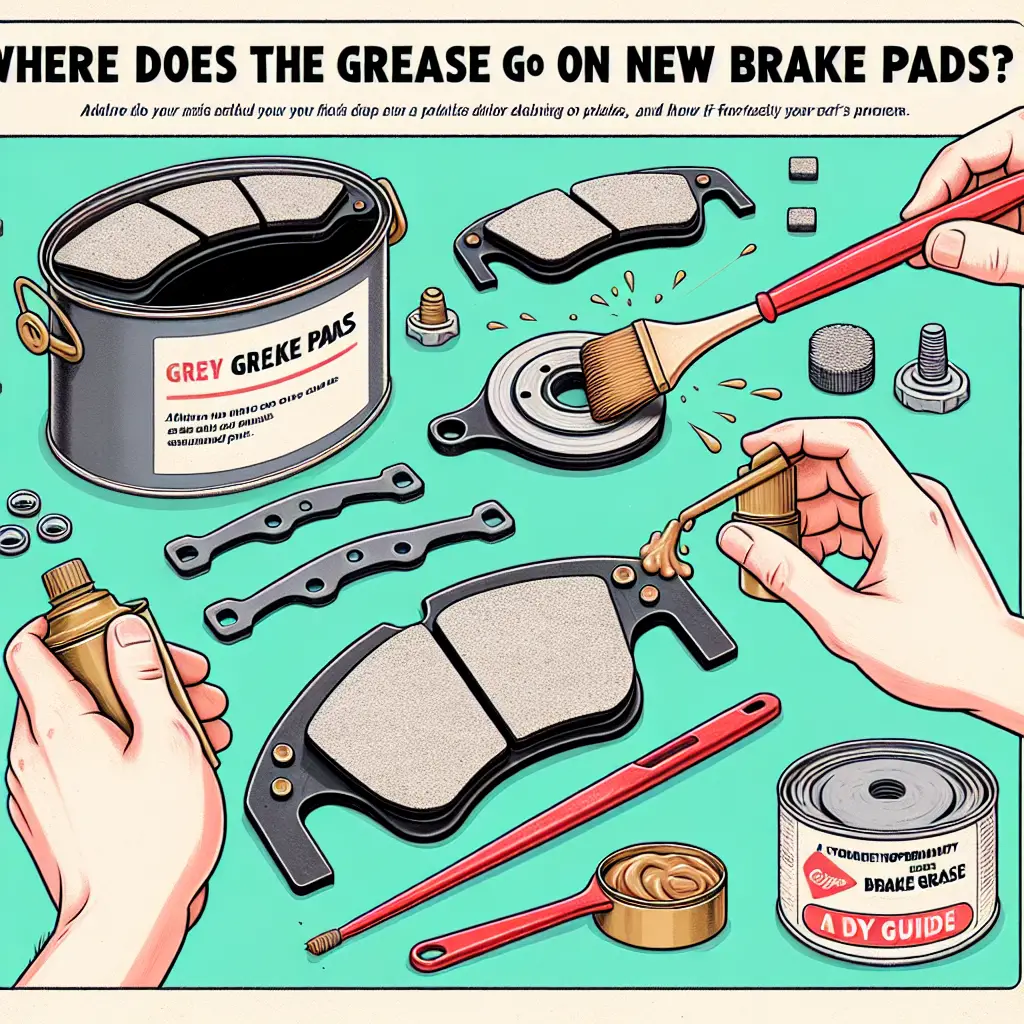Where Does the Grease Go on New Brake Pads? Your Ultimate Guide to Proper Brake Pad Lubrication
Brakes are undoubtedly one of the most critical components in your vehicle, ensuring your safety and that of others on the road. When it comes time to replace your brake pads, understanding the proper lubrication process is just as crucial as the quality of the pads you choose. In this comprehensive guide, we’ll dive into the best practices for brake pad lubrication and discuss where exactly the grease should go when you’re fitting new brake pads.
Understanding the Role of Grease in Brake Function
Before we get into the details, it’s paramount to understand why we use grease on brake pads. The right lubrication helps to reduce friction where metal parts come into contact, which prevents noises like squealing and grinding, and ensures your brakes operate smoothly and efficiently (Car and Driver).
Choosing the Right Brake Grease
First things first, you need to select the appropriate grease for the job. Not just any lubricant will do. It is essential to use a high-temperature brake grease specifically designed for this purpose. This type of grease can withstand the extreme heat generated by the braking system without melting away, which is vital for your safety (Consumer Reports).
Where to Apply the Grease on Your Brake Pads
Now, let’s get to the heart of the matter – where does the grease actually go? It’s a common misconception that you should apply grease directly to the surface of the brake pad that makes contact with the disc – but that’s a definite no-go. Here’s where you should apply the grease:
Backing Plate Contact Points
The backing plate is the part of the brake pad that doesn’t make contact with the rotor. You’ll want to apply a thin layer of grease where the brake pad backing plate touches the caliper and where it may come into contact with the caliper piston. This helps to dampen vibrations and prevent noise.
Slide Pins
Brake caliper slide pins allow the caliper to float freely so your pads wear evenly. These pins should be clean and lubricated with brake grease to move smoothly. Any sticking or binding can cause uneven brake pad wear and reduce braking efficiency.
Shims and Clips
Many brake pads come with shims and clips that should also be greased. Shims fit between the brake pad and the caliper to reduce vibration and noise, whereas clips help to hold the pads in place. Ensuring these elements are lubricated can prevent noise and make sure your brakes operate as quietly as possible.
The No-Grease Zones
There are certain areas where grease should never be applied when installing new brake pads. The friction material should be kept clean and dry at all times, as any grease or lubricant on this area can lead to loss of braking performance, which is a severe safety hazard.
Step-by-Step: Applying the Grease
Let’s break down the process into simple steps:
- Clean the Area: Before applying new grease, clean any old residue from the caliper and other contact points.
-
Apply Grease to the Backing Plate: Dab a bit of grease onto the backing plate’s contact points, but don’t use too much. Overapplying can cause excess to squeeze out and possibly contaminate the rotor or friction material.
-
Lubricate Slide Pins: Remove slide pins, clean them off, and apply a fresh coat of brake grease before reinserting them.
-
Grease Shims and Clips: Put a thin layer of grease on the shims and clips to prevent corrosion and noise.
-
Reassemble: Once everything is properly lubricated, you can reassemble the brake components in the reverse order of removal.
Tips for Brake Maintenance and Safety
- Check Regularly: Always monitor your brakes for signs of wear or issues. Squealing, grinding, or a soft brake pedal can all indicate problems.
- Use Quality Parts: Investing in high-quality brake pads and components pays off in the long run (Car Talk).
- Follow Manufacturer Instructions: Refer to your vehicle’s service manual for any specific guidelines on brake pad replacement and lubrication.
- Safety First: If you’re not confident in performing brake maintenance yourself, it’s wise to seek the help of a professional mechanic.
In Conclusion
Applying grease to the correct parts of your new brake pads is vital for ensuring optimal performance and longevity. Remember, the grease goes on any part that touches but doesn’t rotate against the brake pad – mainly the backing plate, shims, and slide pins. Avoid any lubrication on the rotor or the friction material itself.
Learning the intricacies of brake pad lubrication can ensure your vehicle stops effectively and safely every time you press the pedal. Should you need any further information or help with your brakes, don’t hesitate to visit your local auto shop for professional assistance.
Good brake maintenance doesn’t have to be a sticky situation. By following the right procedures and knowing where to apply the grease on new brake pads, you can confidently take on the road ahead, knowing your vehicle is in top-notch condition. Keep these tips in mind, and your journey will be squeak-free and smooth every time you set out.
Thank you for reading! If you’ve found this article helpful, please remember to share it with fellow car enthusiasts. And for more automotive tips and tricks, stay tuned to our blog, where we dive into all things cars, providing you with the knowledge to keep your vehicle running smoothly.

